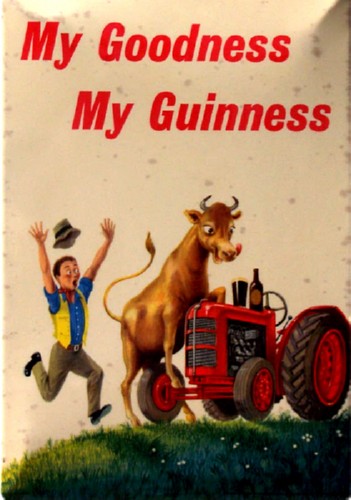
Monday’s ad is one of the first advertising canned beers, in honor of the anniversary of the first beer can being sold today in 1935. It’s for Krueger’s Cream Ale, the first beer to be sold in a can. They tested the package in Richmond, Virginia, far from their native New Jersey in case the test went poorly to avoid any damage to the brand in their home market.












